-
 Univers
Univers
-
 Ebooks
Ebooks
-
 Livres audio
Livres audio
-
 Presse
Presse
-
 Podcasts
Podcasts
-
 BD
BD
-
 Documents
Documents
-
- Cours
- Révisions
- Ressources pédagogiques
- Sciences de l’éducation
- Manuels scolaires
- Langues
- Travaux de classe
- Annales de BEP
- Etudes supérieures
- Maternelle et primaire
- Fiches de lecture
- Orientation scolaire
- Méthodologie
- Corrigés de devoir
- Annales d’examens et concours
- Annales du bac
- Annales du brevet
- Rapports de stage
La lecture à portée de main
Learning Space Design in Higher Education , livre ebook
326
pages
English
Ebooks
2014
Obtenez un accès à la bibliothèque pour le consulter en ligne En savoir plus
Découvre YouScribe en t'inscrivant gratuitement
Découvre YouScribe en t'inscrivant gratuitement
326
pages
English
Ebook
2014
Obtenez un accès à la bibliothèque pour le consulter en ligne En savoir plus
Publié par
Date de parution
13 octobre 2014
Nombre de lectures
4
EAN13
9781912969500
Langue
English
Poids de l'ouvrage
31 Mo
One of the most significant recent trends in Higher Education has been the move from a focus on teaching to one on learning. But, as anyone who has ever run programmes or courses will recognise, both the physical geography and the ethos of the location have major impacts on the quality of the resulting learning experience. Hence the current interest in learning spaces - considered here as 'sites of interaction.'
The fourteen chapters of this anthology, produced by the international Association Learning in Higher Education's well-tested and rigorous methodology, discuss the concept of learning spaces, the pedagogy of learning spaces, and the way learning spaces are changing.
Learning Space Design indicates that the evolution of learning spaces is, and ought to be, a contested area which cannot be resolved just through a formal building commissioning process. It is important to make explicit the nexus between educational philosophy and architectural design of physical and/or virtual learning spaces, especially if the aim is to increase student agency, interaction, and collaboration.
Learning Space Design puts the spotlight on an important, but often overlooked, dimension of teaching and learning processes in higher education. It is a rallying call for a mission to explore further the nature and purposes of learning spaces, and it should be essential reading for all those designing, delivering or evaluating teaching and learning in higher education.
About the editors
Lennie Scott-Webber is Director Education Environments of Steelcase Education Solutions at Steelcase Inc. in Grand Rapids, U.S.A. John Branch is Academic Director of the part-time MBA programmes and Lecturer of Marketing at the Stephen M. Ross School of Business, and Faculty Associate at the Center for Russian, East European, & European Studies, both of the University of Michigan in Ann Arbor, U.S.A. Paul Bartholomew is Director of Learning Innovation and Professional Practice at Aston University in Birmingham, England. Claus Nygaard is executive director of LiHE and executive director of cph: learning institute.
Publié par
Date de parution
13 octobre 2014
Nombre de lectures
4
EAN13
9781912969500
Langue
English
Poids de l'ouvrage
31 Mo
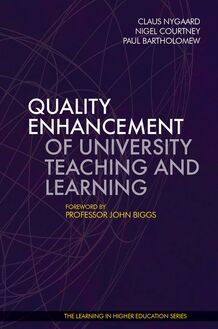
Ebooks
Quality Enhancement of University Teaching and Learning

Ebooks
Etudes supérieures
Quality Enhancement of University Teaching and Learning
280 pages
English
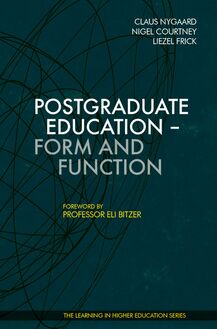
Ebooks
Postgraduate Education - Form and Function


Ebooks
Learning Space Design in Higher Education

Ebooks
Architecture et design
Learning Space Design in Higher Education
326 pages
English

Ebooks
Innovative Teaching and Learning Practices in Higher Education

Ebooks
Economie
Innovative Teaching and Learning Practices in Higher Education
248 pages
English
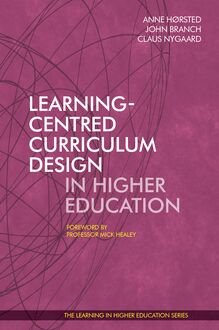
Ebooks
Learning-Centred Curriculum Design in Higher Education

Ebooks
Etudes supérieures
Learning-Centred Curriculum Design in Higher Education
320 pages
English
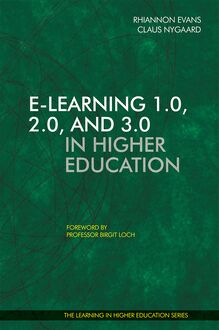
Ebooks
E-Learning 1.0, 2.0, and 3.0 in Higher Education

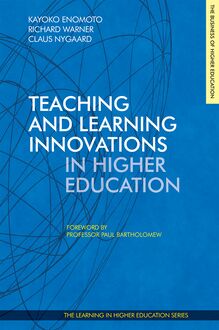
Ebooks
Teaching and Learning Innovations in Higher Education

Ebooks
Etudes supérieures
Teaching and Learning Innovations in Higher Education
518 pages
English
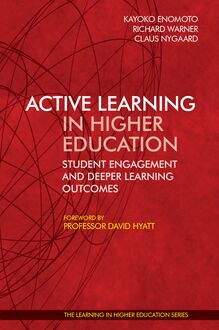
Ebooks
Active Learning in Higher Education
Kayoko Enomoto; Richard Warner and Claus Nygaard

Ebooks
Etudes supérieures
Active Learning in Higher Education
Kayoko Enomoto; Richard Warner and Claus Nygaard
352 pages
English
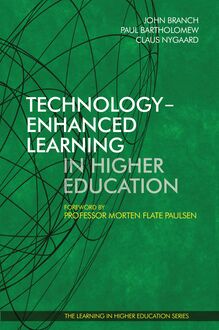
Ebooks
Technology-Enhanced Learning in Higher Education

Ebooks
Etudes supérieures
Technology-Enhanced Learning in Higher Education
264 pages
English
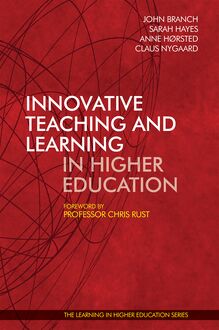
Ebooks
Innovative Teaching and Learning in Higher Education

Ebooks
Etudes supérieures
Innovative Teaching and Learning in Higher Education
444 pages
English
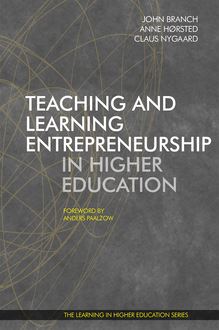
Ebooks
Teaching and Learning Entrepreneurship in Higher Education
John Branch, Anne Horsted

Ebooks
Création d'entreprise
Teaching and Learning Entrepreneurship in Higher Education
John Branch, Anne Horsted
306 pages
English
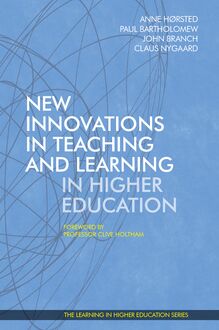
Ebooks
New Innovations in Teaching and Learning in Higher Education

Ebooks
Annales d’examens et concours
New Innovations in Teaching and Learning in Higher Education
484 pages
English
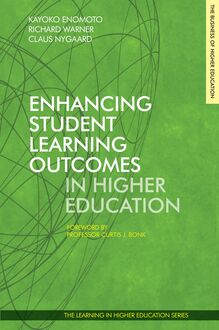
Ebooks
Enhancing Student Learning Outcomes in Higher Education

Ebooks
Etudes supérieures
Enhancing Student Learning Outcomes in Higher Education
460 pages
English
-
 Univers
Univers
-
 Ebooks
Ebooks
-
 Livres audio
Livres audio
-
 Presse
Presse
-
 Podcasts
Podcasts
-
 BD
BD
-
 Documents
Documents
-
Jeunesse
-
Littérature
-
Ressources professionnelles
-
Santé et bien-être
-
Savoirs
-
Education
-
Loisirs et hobbies
-
Art, musique et cinéma
-
Actualité et débat de société
-
Jeunesse
-
Littérature
-
Ressources professionnelles
-
Santé et bien-être
-
Savoirs
-
Education
-
Loisirs et hobbies
-
Art, musique et cinéma
-
Actualité et débat de société
-
Actualités
-
Lifestyle
-
Presse jeunesse
-
Presse professionnelle
-
Pratique
-
Presse sportive
-
Presse internationale
-
Culture & Médias
-
Action et Aventures
-
Science-fiction et Fantasy
-
Société
-
Jeunesse
-
Littérature
-
Ressources professionnelles
-
Santé et bien-être
-
Savoirs
-
Education
-
Loisirs et hobbies
-
Art, musique et cinéma
-
Actualité et débat de société
- Cours
- Révisions
- Ressources pédagogiques
- Sciences de l’éducation
- Manuels scolaires
- Langues
- Travaux de classe
- Annales de BEP
- Etudes supérieures
- Maternelle et primaire
- Fiches de lecture
- Orientation scolaire
- Méthodologie
- Corrigés de devoir
- Annales d’examens et concours
- Annales du bac
- Annales du brevet
- Rapports de stage





